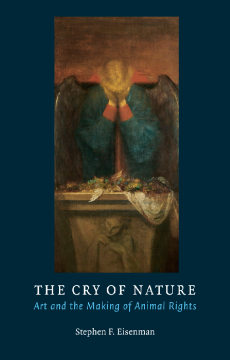
Additional Information
Book Details
Abstract
The eighteenth century saw the rise of new and more sympathetic understanding of animals as philosophy, literature, and art argued that animals could feel and therefore possess inalienable rights. This idea gave birth to a diverse movement that affects how we understand our relationship to the natural world. The Cry of Nature details a crucial period in the history of this movement, revealing the significant role art played in the growth of animal rights.
Stephen F. Eisenman shows how artists from William Hogarth to Pablo Picasso and Sue Coe have represented the suffering, chastisement, and execution of animals. These artists, he demonstrates, illustrate the lessons of Montaigne, Rousseau, Darwin, Freud, and others—that humans and animals share an evolutionary heritage of sentience, intelligence, and empathy, and thus animals deserve equal access to the domain of moral right. Eisenman also traces the roots of speciesism to the classical world and describes the social role of animals in the demand for emancipation. Instructive, challenging, and always engaging, The Cry of Nature is a book for anyone interested in animal rights, art history, and the history of ideas.
“Surveying the role of art within the historical development of ideas recognizing the rights of animals, Eisenman addresses important social and philosophical changes--particularly from the 18th and 19th centuries--that led to a growing respect for animals as sentient beings. . . . Pictures ranging from Rembrandt's Flayed Ox to Hogarth's The Four Stages of Cruelty, from paintings by Chardin, Gericault and Delacroix to works by Blake, Landseer, and William Holman Hunt, all demonstrate artists' valuable contributions to societal conceptions of animals.”
— Choice
“Eisenman artfully weaves together examples from literature (Jean de la Fontaine, John Oswald, Sartre, Kafka, Orwell), natural philosophy (Descartes, Montaigne, Diderot, La Mettrie, Rousseau), psychology (Freud), politics and economics (Marx), and animal welfare/rights discourse (Peter Singer, Gary Francione, William Wilberforce, Richard Martin) with interpretations of artistic works to create a varied and intertwined explanation of human-animal relationships from antiquity to the present.”
— Art Libraries Society of North America
Stephen F. Eisenman is professor of art history at Northwestern University. He is the author of The Abu Ghraib Effect, also published by Reaktion Books, and Nineteenth Century Art: A Critical History.
